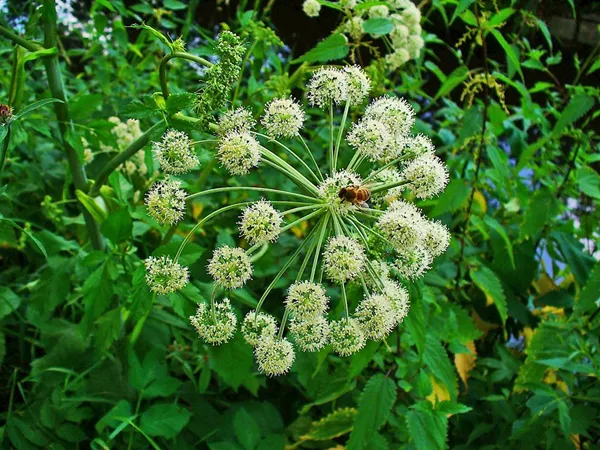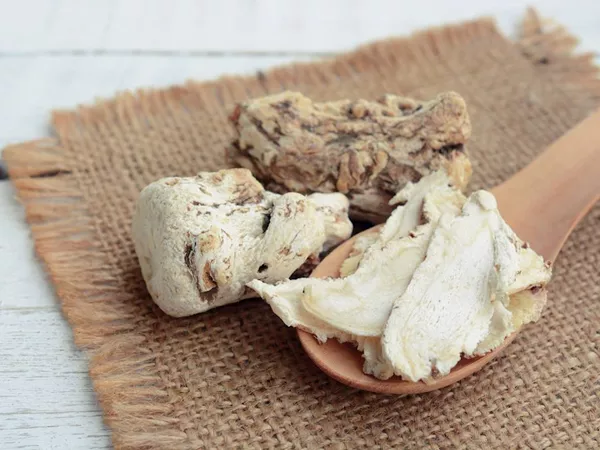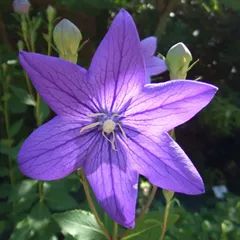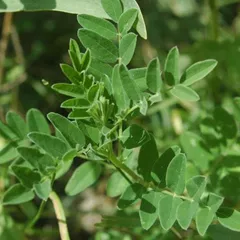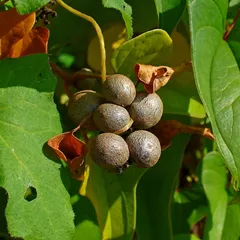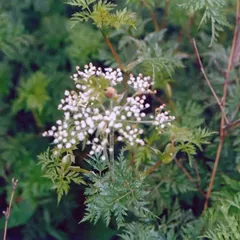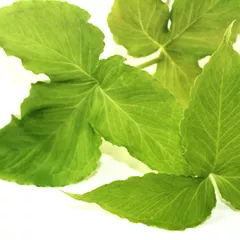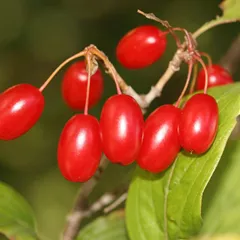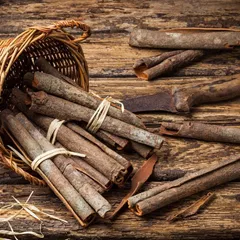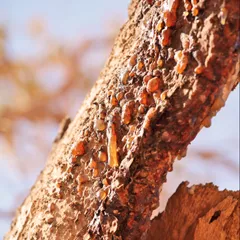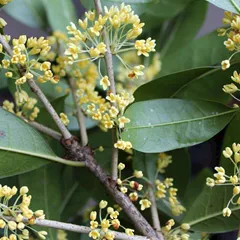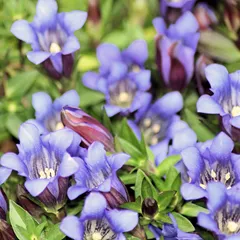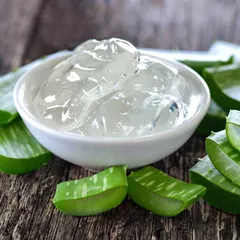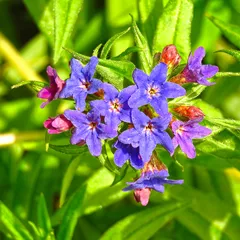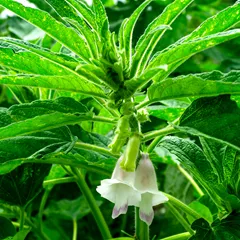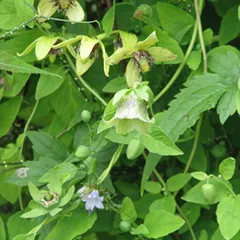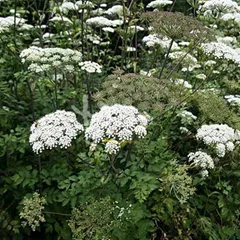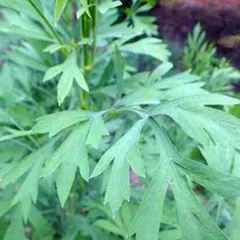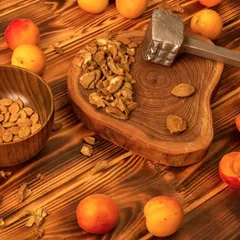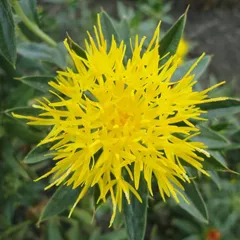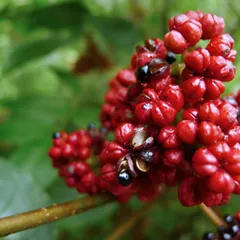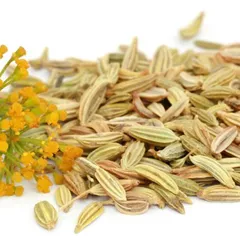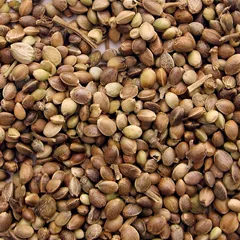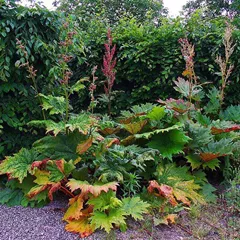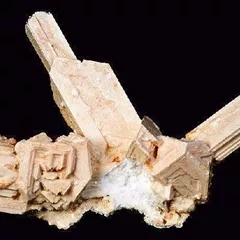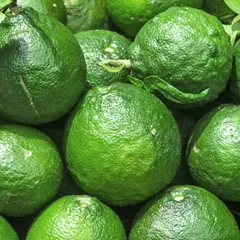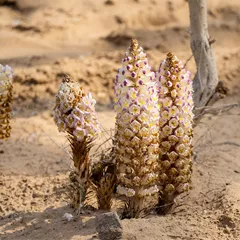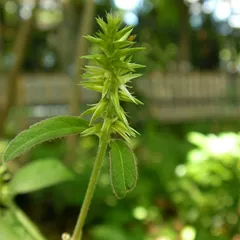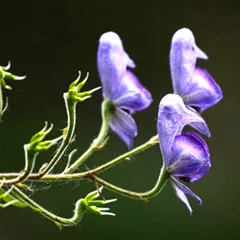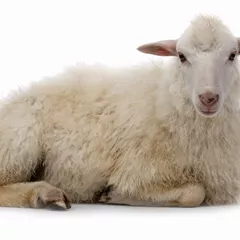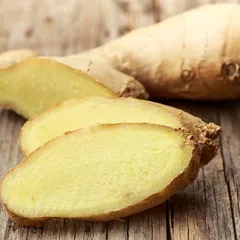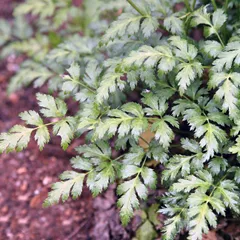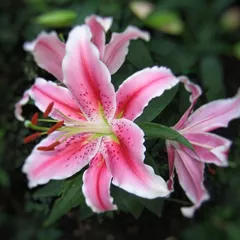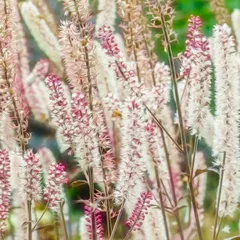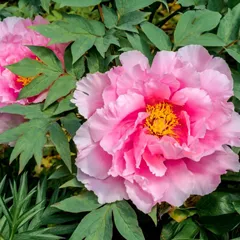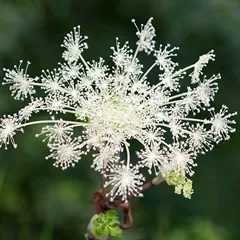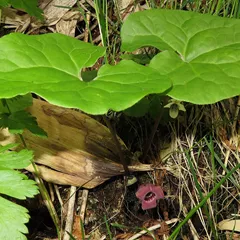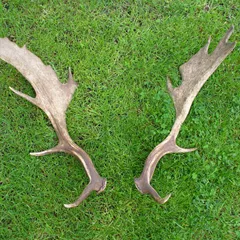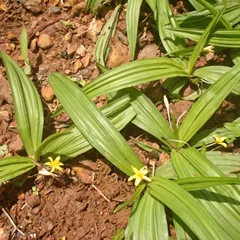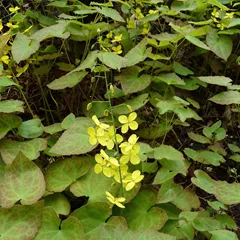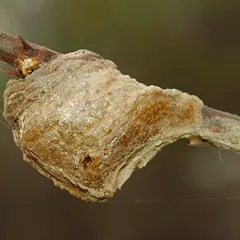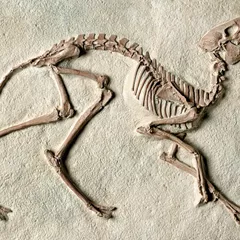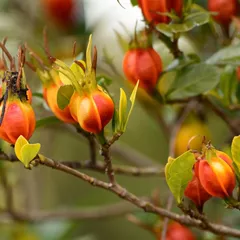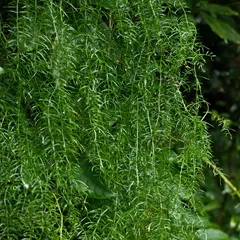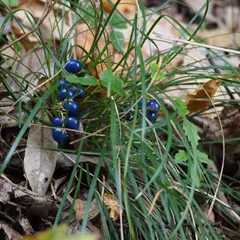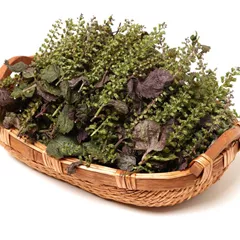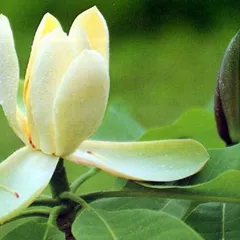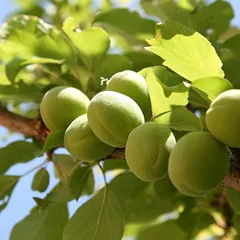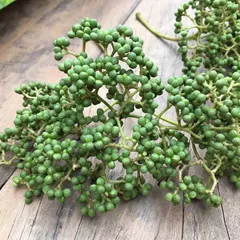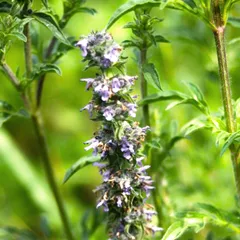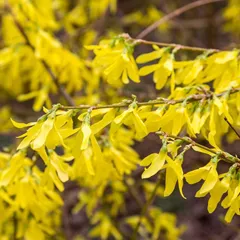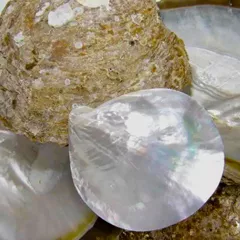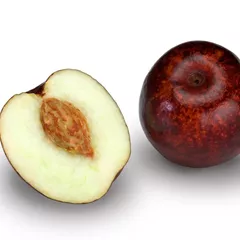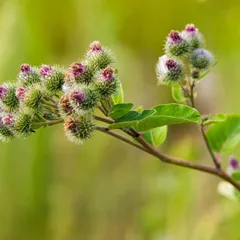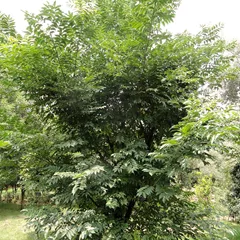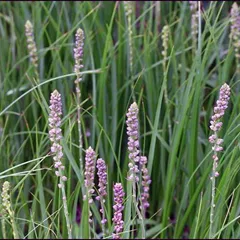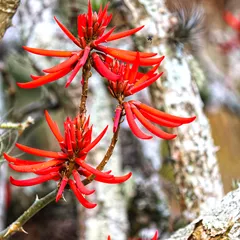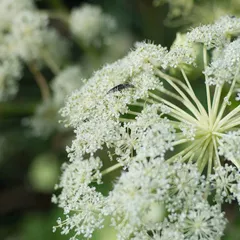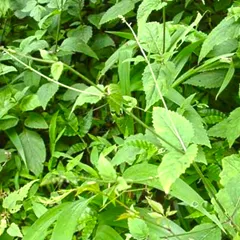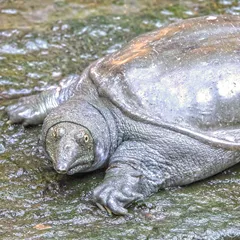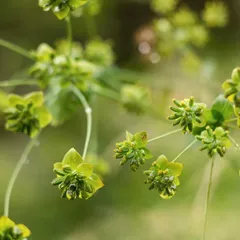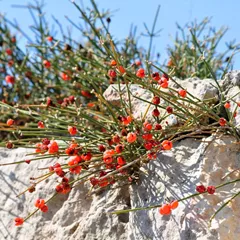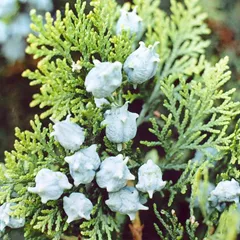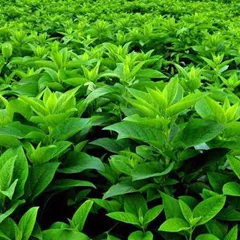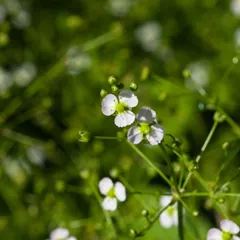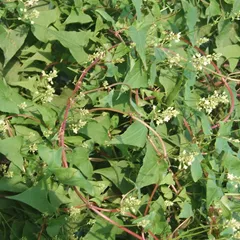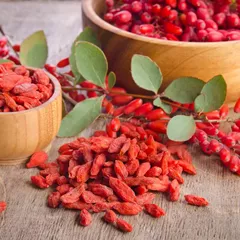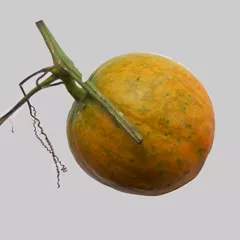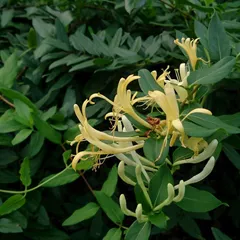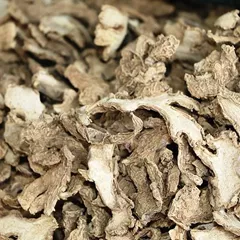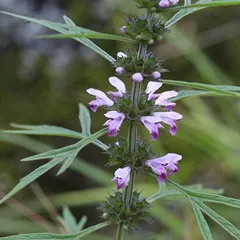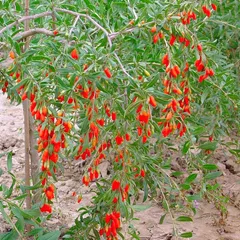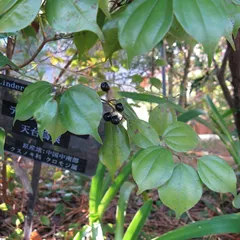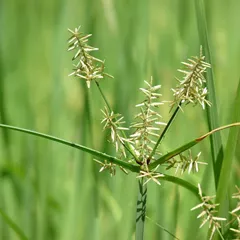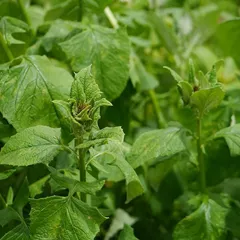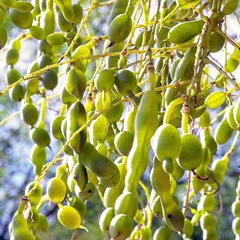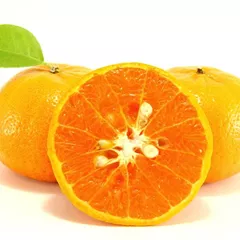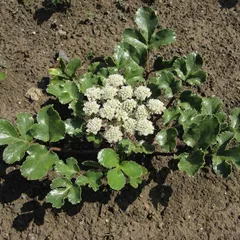Use of Dang Gui (dong quai) in TCM
Please note that you should never self-prescribe TCM ingredients. A TCM ingredient is almost never eaten on its own but as part of a formula containing several ingredients that act together. Please consult a professional TCM practitioner, they will be best able to guide you.
Preparation: At the end of fall, the root is picked and cleaned. It is left to dry slightly, bundled into small pieces and smoked slowly. After that it is washed, cut into thin slices and dried.
Dosage: 6 to 12g
Main actions according to TCM*: Tonifies the Blood. Lubricates the Intestines. Relieve constipation. Promotes circulation and dispels Bi Pain. Reduce Dysmenorrhea and help with irregular menstruation.
Primary conditions or symptoms for which Dang Gui may be prescribed by TCM doctors*: Irregular menstruation Anemia Amenorrhea Dysmenorrhea Constipation Arthralgia Abdominal pain
Contraindications*: Not for those with diarrhea, abdominal distention caused by Dampness or those with Yin Deficiency with Heat signs.
Common TCM formulas in which Dang Gui is used*
Xia Ru Yong Quan San
Source date: 1840 AD
Number of ingredients: 11 herbs
Formula key actions: Nourishes Blood. Increases breast milk supply.
Dang Gui is a king ingredient in Xia Ru Yong Quan San. Like the name indicates, it means it has more power than other ingredients in the formula.
In Xia Ru Yong Quan San, Dang Gui nourishes and invigorates Blood
Sheng Yu Tang
Source date: 1336 AD
Number of ingredients: 6 herbs
Formula key actions: Tonifies Qi and Blood. Preserves the Blood.
Dang Gui is a king ingredient in Sheng Yu Tang. Like the name indicates, it means it has more power than other ingredients in the formula.
In Sheng Yu Tang, Dang Gui is warming and moistening. It enters the Liver and Heart to tonify and invigorate the Blood. It also moistens the Intestines and regulates the dynamic between the Liver (movement) and Kidneys (storage).
Tiao Gan Tang
Source date: 1827 AD
Number of ingredients: 7 herbs
Formula key actions: Nourishes Kidney and Liver Yin.
Dang Gui is a king ingredient in Tiao Gan Tang. Like the name indicates, it means it has more power than other ingredients in the formula.
In Tiao Gan Tang, Dang Gui nourishes and invigorates Blood
Xiong Gui Er Chen Tang
Source date: 1575 AD
Number of ingredients: 7 herbs
Formula key actions: Resolves Damp-Phlegm. Nourishes Blood.
Dang Gui is a king ingredient in Xiong Gui Er Chen Tang. Like the name indicates, it means it has more power than other ingredients in the formula.
In Xiong Gui Er Chen Tang, Dang Gui nourishes and invigorates the Blood
Dang Gui Di Huang Yin
Source date: 1640 AD
Number of ingredients: 7 herbs
Formula key actions: Nourishes Blood. Tonifies Kidney and Liver Yin. Regulates the menstrual cycle.
Dang Gui is a king ingredient in Dang Gui Di Huang Yin. Like the name indicates, it means it has more power than other ingredients in the formula.
In Dang Gui Di Huang Yin, Dang Gui nourishes Blood and strengthens the Uterus
Ren Shen Dang Gui Tang
Source date: 1742 AD
Number of ingredients: 6 herbs
Formula key actions: Tonifies Qi and Blood. Nourishes Yin.
Dang Gui is a king ingredient in Ren Shen Dang Gui Tang. Like the name indicates, it means it has more power than other ingredients in the formula.
In Ren Shen Dang Gui Tang, Dang Gui nourishes Blood. Blood is a Yin element.
Xiao Tiao Jing Tang
Source date: 1742 AD
Number of ingredients: 7 herbs
Formula key actions: Remove Blood Stagnation. Nourishes Blood. Calms the Mind.
Dang Gui is a king ingredient in Xiao Tiao Jing Tang. Like the name indicates, it means it has more power than other ingredients in the formula.
In Xiao Tiao Jing Tang, Dang Gui nourishes Blood.
Dang Gui Si Ni Tang
Source date: 220 AD
Number of ingredients: 7 herbs
Formula key actions: Warms the Channels. Disperses Cold. Nourishes the Blood. Unblocks the Blood vessels.
Conditions targeted*: Vascular headacheRaynaud's disease and others
Dang Gui is a king ingredient in Dang Gui Si Ni Tang. Like the name indicates, it means it has more power than other ingredients in the formula.
In Dang Gui Si Ni Tang, Dang Gui is acrid, sweet, and warming. It tonifies and invigorates the Blood to disperse Cold.
Dang Gui Long Hui Wan
Source date: 1172 AD
Number of ingredients: 11 herbs
Formula key actions: Drains Liver and Gallbladder Fire Excess.
Conditions targeted*: VertigoTinnitus and others
Dang Gui is a king ingredient in Dang Gui Long Hui Wan. Like the name indicates, it means it has more power than other ingredients in the formula.
In Dang Gui Long Hui Wan, Dang Gui softens the Liver by tonifying its Blood. This is important because only a Liver whose Blood is strong and mobile can ensure the smooth flow of Qi (one of the Liver's key functions).
Shu Jing Huo Xue Tang
Source date: 1587 AD
Number of ingredients: 16 herbs
Formula key actions: Expels Wind Damp from the Channels. Invigorates Blood. Unblocks the channels.
Conditions targeted*: ArthralgiaBell's palsy and others
Dang Gui is a king ingredient in Shu Jing Huo Xue Tang. Like the name indicates, it means it has more power than other ingredients in the formula.
In Shu Jing Huo Xue Tang, Dang Gui invigorates the Blood and harmonize the Nutritive Qi.
Zi Dang Gao
Source date: 1831 AD
Number of ingredients: 4 herbs
Formula key actions: Clears Heat and cools the Blood. Resolves toxicity . Moistens Dryness. Relieves pain and itching.
Conditions targeted*: Lip soresEczema and others
Dang Gui is a king ingredient in Zi Dang Gao. Like the name indicates, it means it has more power than other ingredients in the formula.
In Zi Dang Gao, Dang Gui moistens the skin and invigorates the Blood. When the Toxic-Heat are resolved and the damaged skin is moistened, the pain and itching will cease.
An Tai Zhu Gao
Source date: 1879 AD
Number of ingredients: 14 herbs
Formula key actions: Strengthens the Qi and Blood. Tonifies the Liver and Kidneys. Calms the fetus.
Conditions targeted*: Restless fetus and others
Dang Gui is a king ingredient in An Tai Zhu Gao. Like the name indicates, it means it has more power than other ingredients in the formula.
In An Tai Zhu Gao, Dang Gui Tonifies the Blood.
Dang Gui Liu Huang Tang
Source date: 1336 AD
Number of ingredients: 7 herbs
Formula key actions: Enriches the Yin. Drains Fire. Stabilizes the Exterior. Stops sweating.
Conditions targeted*: TuberculosisDiabetes and others
Dang Gui is a king ingredient in Dang Gui Liu Huang Tang. Like the name indicates, it means it has more power than other ingredients in the formula.
In Dang Gui Liu Huang Tang, Dang Gui nourishes the Blood and increases the Body Fluids, which are then able to lubricate the Intestines and moisten the dry stools.
Guo Qi Yin
Source date: 1602 AD
Number of ingredients: 11 herbs
Formula key actions: Warms the menses. Dispels blood Stagnation. Nourishes the blood .
Conditions targeted*: Irregular menstruationDysmenorrhea and others
Dang Gui is a king ingredient in Guo Qi Yin. Like the name indicates, it means it has more power than other ingredients in the formula.
In Guo Qi Yin, Dang Gui nourishes and invigorates the Blood, warms the menses, and relieves pain.
The two key herbs tonify insufficiency in the Nutritive Level and the Blood.
Si Wu Tang
Source date: 846 AD
Number of ingredients: 4 herbs
Formula key actions: Restores and nourishes Blood. Stimulates Blood circulation.
Conditions targeted*: Menstrual crampsIrregular menstruation and others
Dang Gui is a deputy ingredient in Si Wu Tang. This means it helps the king ingredient(s) treat the main pattern or it serves to treat a coexisting pattern.
In Si Wu Tang, Dang Gui enters the Liver and Heart to tonify and invigorate the Blood.
Juan Bi Tang
Source date: 1178 AD
Number of ingredients: 9 herbs
Formula key actions: Tonifies and harmonizes the Protective and Nutritive Qi. Dispels Wind. Eliminates Dampness.
Conditions targeted*: Periarthritis of the shoulderRheumatoid arthritis and others
Dang Gui is a deputy ingredient in Juan Bi Tang. This means it helps the king ingredient(s) treat the main pattern or it serves to treat a coexisting pattern.
In Juan Bi Tang, Dang Gui works together with White Peony root (Shao Yao), another deputy here, to nourish the Blood and harmonize the Nutritive Qi, thereby facilitating the dispelling of the pathogenic Qi.
Gui Pi Tang
Source date: 1529 AD
Number of ingredients: 12 herbs
Formula key actions: Tonifies and nourish Qi and Blood. Tonifies Heart and Spleen.
Conditions targeted*: Nervous exhaustionMyasthenia gravis and others
Dang Gui is a deputy ingredient in Gui Pi Tang. This means it helps the king ingredient(s) treat the main pattern or it serves to treat a coexisting pattern.
In Gui Pi Tang, Dang Gui tonifies the Blood and regulates women's menstruations.
Its combination with Milkvetch root (Huang Qi), one of the key herbs in this formula, is very effective in generating and tonifying the Blood.
Tong Ru Dan
Source date: 1826 AD
Number of ingredients: 6 herbs
Formula key actions: Tonifies the Qi and Blood. Removes Stagnation from the breast connecting Meridians.
Dang Gui is a deputy ingredient in Tong Ru Dan. This means it helps the king ingredient(s) treat the main pattern or it serves to treat a coexisting pattern.
In Tong Ru Dan, Dang Gui nourishes Blood and supports the flow os Body Fluids.
Tao Hong Si Wu Tang
Source date: 1291 AD
Number of ingredients: 6 herbs
Formula key actions: Tonifies Blood and regulates the Liver. Moves Qi and Blood in the lower abdomen. Stops pain.
Conditions targeted*: Scanty menstruationPainful menstruations and others
Dang Gui is a deputy ingredient in Tao Hong Si Wu Tang. This means it helps the king ingredient(s) treat the main pattern or it serves to treat a coexisting pattern.
In Tao Hong Si Wu Tang, Dang Gui is warming and moistening. It enters the Liver and Heart to tonify and invigorating the Blood.
Wen Jing Tang
Source date: 220 AD
Number of ingredients: 12 herbs
Formula key actions: Warms the Uterus and vessels. Nourishes Blood. Dispels Cold. Dispels Blood Stagnation.
Conditions targeted*: Dysfunctional uterine bleedingUterine hypoplasia and others
Dang Gui is a deputy ingredient in Wen Jing Tang. This means it helps the king ingredient(s) treat the main pattern or it serves to treat a coexisting pattern.
In Wen Jing Tang, Dang Gui nourishes and invigorates Blood, which is necessary because the obstruction of the Uterus by Cold prevents new Blood from taking its proper place there. It also regulates the menstruation, tonifies the Yin and regulates the Liver.
Ren Shen Yang Rong Tang
Source date: 1174 AD
Number of ingredients: 14 herbs
Formula key actions: Tonifies Qi and Blood. Nourishes the Heart. Calms the spirit.
Conditions targeted*: AnemiaNonhealing ulcers and others
Dang Gui is a deputy ingredient in Ren Shen Yang Rong Tang. This means it helps the king ingredient(s) treat the main pattern or it serves to treat a coexisting pattern.
In Ren Shen Yang Rong Tang, Dang Gui supports White peony root in nourishing the Blood.
Ba Zhen Tang
Source date: 1326 AD
Number of ingredients: 10 herbs
Formula key actions: Tonifies and augments Qi. Tonifies and augments Blood.
Conditions targeted*: AnemiaHepatitis and others
Dang Gui is a deputy ingredient in Ba Zhen Tang. This means it helps the king ingredient(s) treat the main pattern or it serves to treat a coexisting pattern.
In Ba Zhen Tang, Dang Gui nourishes Blood and therefore helps reinforcing the action of the king ingredient Shu Di Huang (Prepared rehmannia).
Xue Fu Zhu Yu Tang
Source date: 1830 AD
Number of ingredients: 11 herbs
Formula key actions: Invigorates the Blood. Dispels blood Stagnation. Spreads the Liver Qi. Unblocks the channels.
Conditions targeted*: Coronary artery diseaseRheumatic valvular heart disease and others
Dang Gui is a deputy ingredient in Xue Fu Zhu Yu Tang. This means it helps the king ingredient(s) treat the main pattern or it serves to treat a coexisting pattern.
In Xue Fu Zhu Yu Tang, Dang Gui invigorate the Blood. However, its focus more on the lower part of the body. It also nourishes the Blood.
Nuan Gan Jian
Source date: 1624 AD
Number of ingredients: 8 herbs
Formula key actions: Warms the Liver and Kidneys. Promotes the movement of Qi. Alleviates pain.
Conditions targeted*: VaricoceleHydrocele and others
Dang Gui is a deputy ingredient in Nuan Gan Jian. This means it helps the king ingredient(s) treat the main pattern or it serves to treat a coexisting pattern.
In Nuan Gan Jian, Dang Gui nourishes Blood, tonifies the Liver and augment the Kidneys.
Shen Qi Si Wu Tang
Source date: 846 AD
Number of ingredients: 6 herbs
Formula key actions: Restores and nourishes Blood. Stimulates Blood circulation. Tonifies Qi.
Dang Gui is a deputy ingredient in Shen Qi Si Wu Tang. This means it helps the king ingredient(s) treat the main pattern or it serves to treat a coexisting pattern.
In Shen Qi Si Wu Tang, Dang Gui enters the Liver and Heart to tonify and invigorate the Blood.
Bu Yang Huang Wu Tang
Source date: 1830 AD
Number of ingredients: 7 herbs
Formula key actions: Tonifies Qi. Invigorates Blood. Unblocks the channels.
Conditions targeted*: Poststroke hemiplegiaCerebrovascular disease and others
Dang Gui is a deputy ingredient in Bu Yang Huang Wu Tang. This means it helps the king ingredient(s) treat the main pattern or it serves to treat a coexisting pattern.
In Bu Yang Huang Wu Tang, Dang Gui invigorates the Blood and harmonize the Nutritive Qi.
Shen Tong Zhu Yu Tang
Source date: 1830
Number of ingredients: 12 herbs
Formula key actions: Invigorates Blood. Unblocks painful obstruction. Relieves pain. Invigorate Qi. Dispels Blood Stagnation. Unblock Channels.
Conditions targeted*: Muscle crampsArthralgia and others
Dang Gui is a deputy ingredient in Shen Tong Zhu Yu Tang. This means it helps the king ingredient(s) treat the main pattern or it serves to treat a coexisting pattern.
In Shen Tong Zhu Yu Tang, Dang Gui invigorate the Blood. However, its focus more on the lower part of the body. It also nourishes the Blood.
Bu Gan Tang
Source date: 1742 AD
Number of ingredients: 7 herbs
Formula key actions: Tonifies and regulates the Blood. Nourishes the Liver Yin.
Conditions targeted*: PhotophobiaAnemia and others
Dang Gui is a deputy ingredient in Bu Gan Tang. This means it helps the king ingredient(s) treat the main pattern or it serves to treat a coexisting pattern.
In Bu Gan Tang, Dang Gui enters the Liver and Heart to tonify and invigorate the Blood.
Run Chang Wan
Source date: 1773 AB
Number of ingredients: 5 herbs
Formula key actions: Moistens the Intestines . Unblocks the bowels.
Conditions targeted*: ConstipationLong-standing constipation and others
Dang Gui is a deputy ingredient in Run Chang Wan. This means it helps the king ingredient(s) treat the main pattern or it serves to treat a coexisting pattern.
In Run Chang Wan, Dang Gui nourishes the Blood and helps in moistening the desiccated Intestines.
Huang Long Tang
Source date: 1445 AD
Number of ingredients: 10 herbs
Formula key actions: Clear Heat from the Interior . Supports the Original Qi.
Conditions targeted*: TyphoidParatyphoid and others
Dang Gui is a deputy ingredient in Huang Long Tang. This means it helps the king ingredient(s) treat the main pattern or it serves to treat a coexisting pattern.
In Huang Long Tang, Dang Gui protect the General Qi and tonifies the Blood.
Ji Chuan Jian
Source date: 1624 AD
Number of ingredients: 6 herbs
Formula key actions: Warms the Kidneys . Nourishes the Blood . Strengthens the Essence . Moistens the Intestines. Unblocks bowels .
Conditions targeted*: ConstipationConstipation in the elderly and others
Dang Gui is a deputy ingredient in Ji Chuan Jian. This means it helps the king ingredient(s) treat the main pattern or it serves to treat a coexisting pattern.
In Ji Chuan Jian, Dang Gui nourishes and harmonizes the Blood and moistens the Intestines.
Zan Yu Dan
Source date: 1624 AD
Number of ingredients: 14 herbs
Formula key actions: Warms and tonifies the Kidneys.
Conditions targeted*: Erectile dysfunctionInfertility in male and others
Dang Gui is a deputy ingredient in Zan Yu Dan. This means it helps the king ingredient(s) treat the main pattern or it serves to treat a coexisting pattern.
In Zan Yu Dan, Dang Gui is combined with the key ingredients to tonify the Yin and replenish the Essence.
Dang Gui Sheng Jiang Yang Rou Tang
Source date: 220 AD
Number of ingredients: 3 herbs
Formula key actions: Warms the Interior. Nourishes the Blood. Alleviates Pain.
Conditions targeted*: Postpartum weaknessHernia and others
Dang Gui is a deputy ingredient in Dang Gui Sheng Jiang Yang Rou Tang. This means it helps the king ingredient(s) treat the main pattern or it serves to treat a coexisting pattern.
In Dang Gui Sheng Jiang Yang Rou Tang, Dang Gui tonifies without causing Blood Stagnation, and warms without drying.
It is also an excellent herb for generating Blood, which is required in this condition.
Shao Yao Tang
Source date: 1186 AD
Number of ingredients: 9 herbs
Formula key actions: Regulates and harmonizes the Qi and Blood. Clears Heat. Dries dampness. Resolves Toxicity.
Conditions targeted*: Acute enteritisUlcerative colitis and others
Dang Gui is a deputy ingredient in Shao Yao Tang. This means it helps the king ingredient(s) treat the main pattern or it serves to treat a coexisting pattern.
In Shao Yao Tang, Dang Gui tonifies, warms, and moves the Blood.
Together with Blood-moving herb White peony root, it regulates the nutritive Qi and Blood, following the principle that: When the Blood moves, pus in the stools is naturally healed.
Dang Gui Bu Xue Tang
Source date: 1247 AD
Number of ingredients: 2 herbs
Formula key actions: Tonifies the Qi. Generates Blood.
Conditions targeted*: Postpartum feverPerimenstrual fevers and others
Dang Gui is a deputy ingredient in Dang Gui Bu Xue Tang. This means it helps the king ingredient(s) treat the main pattern or it serves to treat a coexisting pattern.
In Dang Gui Bu Xue Tang, Dang Gui invigorates the Blood. In a related manner, it also replenishes the 'Qi of the Blood' and therefore works particularly well in conjunction with Milkvetch root, which indirectly tonifies the Blood by tonifying the Qi , as previously explained.
Ming Mu Di Huang Wan
Source date: 1642 AD
Number of ingredients: 12 herbs
Formula key actions: Nourishes the Liver. Enriches the Kidneys. Improves the vision.
Dang Gui is a deputy ingredient in Ming Mu Di Huang Wan. This means it helps the king ingredient(s) treat the main pattern or it serves to treat a coexisting pattern.
In Ming Mu Di Huang Wan, Dang Gui nourishes and moves the Blood. It also moistens the Intestines so as to encourage bowel movement.
Bu Zhong Yi Qi Tang
Source date: 1247
Number of ingredients: 10 herbs
Formula key actions: Tonifies Qi of the Spleen and Stomach (Middle Burner). Raises the Yang. Detoxifies. Lifts what has sunken.
Conditions targeted*: Chronic hepatitisArrhythmia and others
Dang Gui is an assistant ingredient in Bu Zhong Yi Qi Tang. This means that it either serves to reinforces the effect of other ingredients or it moderates their toxicity.
In Bu Zhong Yi Qi Tang, Dang Gui tonifies the Qi in the Blood.
Bai He Gu Jin Tang
Source date: 1573 AD
Number of ingredients: 10 herbs
Formula key actions: Nourishes Lung and Kidney Yin. Lubricates the Lung and clears phlegm.
Conditions targeted*: Chronic bronchitisChronic pharyngitis and others
Dang Gui is an assistant ingredient in Bai He Gu Jin Tang. This means that it either serves to reinforces the effect of other ingredients or it moderates their toxicity.
In Bai He Gu Jin Tang, Dang Gui , together with White peony roots, another assistant herb, nourish the Blood to support the Yin. Also they together protect the Lungs from violation thanks to their action of calming the Liver.
Qing Wei San
Source date: 1336 AD
Number of ingredients: 5 herbs
Formula key actions: Drains Stomach Fire. Cools the Blood. Nourishes the Yin.
Conditions targeted*: StomatitisPeriodontitis and others
Dang Gui is an assistant ingredient in Qing Wei San. This means that it either serves to reinforces the effect of other ingredients or it moderates their toxicity.
In Qing Wei San, Dang Gui reduces swelling and alleviates pain by harmonizing the Blood.
Du Huo Ji Sheng Tang
Source date: 650 AD
Number of ingredients: 15 herbs
Formula key actions: Anti-rheumatic, clears Wind, Cold and Damp Stagnation. Strengthens the function of the Liver and Kidney. Tonifies Qi and Blood.
Conditions targeted*: Chronic lower back painSciatica and others
Dang Gui is an assistant ingredient in Du Huo Ji Sheng Tang. This means that it either serves to reinforces the effect of other ingredients or it moderates their toxicity.
In Du Huo Ji Sheng Tang, Dang Gui works together with Szechuan lovage roots (Chuan Xiong), Unprepared Rehmannia (Di Huang) and White peony roots (Bai Shao), other assistants in this formula, to nourish and invigorate the Blood.
You Gui Wan
Source date: 1624 AD
Number of ingredients: 10 herbs
Formula key actions: Warms and tonifies Kidney Yang. Replenishes the Essence. Tonifies the Blood.
Conditions targeted*: Nephrotic syndromeOsteoporosis and others
Dang Gui is an assistant ingredient in You Gui Wan. This means that it either serves to reinforces the effect of other ingredients or it moderates their toxicity.
In You Gui Wan, Dang Gui tonifies the Blood and nourishes the Liver.
Er Xian Tang
Source date: 1950 AD
Number of ingredients: 6 herbs
Formula key actions: Nourishes Yin and tonifies Yang of the Kidneys. Clears Empty Heat. Regulates the Directing and Penetrating Vessels.
Conditions targeted*: Perimenopausal syndromeEssential hypertension and others
Dang Gui is an assistant ingredient in Er Xian Tang. This means that it either serves to reinforces the effect of other ingredients or it moderates their toxicity.
In Er Xian Tang, Dang Gui moistens and nourishes the Blood and regulates the Penetrating and Governing Vessels.
Sang Piao Xiao San
Source date: 1116 AD
Number of ingredients: 8 herbs
Formula key actions: Regulates and tonifies the Heart and Kidneys. Stabilizes the Essence. Stops leakage.
Conditions targeted*: Pediatric enuresisDiabetes and others
Dang Gui is an assistant ingredient in Sang Piao Xiao San. This means that it either serves to reinforces the effect of other ingredients or it moderates their toxicity.
In Sang Piao Xiao San, Dang Gui nourishes the Blood and Yin. Together with the other ingredients in this formula, it regulates and tonifies the Qi and Blood, which is essential for revitalization to occur.
Long Dan Xie Gan Tang
Source date: 1682 AD
Number of ingredients: 10 herbs
Formula key actions: Clears Heat and Fire from the Liver and Gallbladder. Clears and drains Damp-Heat from the Lower Burner.
Conditions targeted*: FurunclesPurulent otitis and others
Dang Gui is an assistant ingredient in Long Dan Xie Gan Tang. This means that it either serves to reinforces the effect of other ingredients or it moderates their toxicity.
In Long Dan Xie Gan Tang, Dang Gui nourishes the Blood without causing Stagnation to counteract the effect of the bitter, drying herbs in the formula.
Tian Wang Bu Xin Dan
Source date: 16th century
Number of ingredients: 14 herbs
Formula key actions: Enriches the Yin. Nourishes the Blood. Clears Heat. Calms the Mind.
Conditions targeted*: Perimenopausal syndromeChronic urticaria and others
Dang Gui is an assistant ingredient in Tian Wang Bu Xin Dan. This means that it either serves to reinforces the effect of other ingredients or it moderates their toxicity.
In Tian Wang Bu Xin Dan, Dang Gui tonifies the Blood to nourish the Heart without causing Stagnation.
Su Zi Jiang Qi Tang
Source date: 650 AD
Number of ingredients: 8 herbs
Formula key actions: Directs rebellious Qi downward. Arrests wheezing. Stops coughing. Warms and transforms Phlegm-Cold.
Conditions targeted*: Chronic bronchitisEmphysema and others
Dang Gui is an assistant ingredient in Su Zi Jiang Qi Tang. This means that it either serves to reinforces the effect of other ingredients or it moderates their toxicity.
In Su Zi Jiang Qi Tang, Dang Gui treats the cough from Rebellious Qi and harmonize Qi and Blood when the latter has been devitalized by a chronic disorder. Lastly it prevents injury to the Yin and Qi from the acrid, dry properties of many of the other herbs in the formula.
Wu Lin San
Source date: 1107 AD
Number of ingredients: 5 herbs
Formula key actions: Clears heat. Cools the Blood. Promotes urination. Unblocks painful urinary dribbling.
Conditions targeted*: UrethritisCystitis and others
Dang Gui is an assistant ingredient in Wu Lin San. This means that it either serves to reinforces the effect of other ingredients or it moderates their toxicity.
In Wu Lin San, Dang Gui moves the Blood to dispel Stasis and stops the abdominal pain. It also nourishes the Blood to compensate for any blood loss.
Wu Mei Wan
Source date: 220 AD
Number of ingredients: 9 herbs
Formula key actions: Warms the Organs. Drains Heat. Calms roundworms. Drains the Liver. Calms the Stomach.
Conditions targeted*: AscariasisBiliary ascariasis and others
Dang Gui is an assistant ingredient in Wu Mei Wan. This means that it either serves to reinforces the effect of other ingredients or it moderates their toxicity.
In Wu Mei Wan, Dang Gui tonifies the Qi and nourishes the Blood to prevent further injury to the Normal Qi.
Da Fang Feng Tang
Source date: 1107 AD
Number of ingredients: 14 herbs
Formula key actions: Expel Wind Damp. Relieve pain. Tonify the Liver and the Kidneys. Tonify the Blood and Qi.
Conditions targeted*: ArthralgiaCommon cold and others
Dang Gui is an assistant ingredient in Da Fang Feng Tang. This means that it either serves to reinforces the effect of other ingredients or it moderates their toxicity.
In Da Fang Feng Tang, Dang Gui invigorates and tonifies Blood at the same time. It is one of the four ingredients for the formula Si Wu Tang which is commonly use for Blood tonifying and invigorating purpose.
Jing Jie Lian Qiao Tang
Source date: 1773 AD
Number of ingredients: 12 herbs
Formula key actions: Dispels Wind. Clears toxic-Heat. Disperses Stagnation.
Conditions targeted*: RhinitisTonsillitis and others
Dang Gui is an assistant ingredient in Jing Jie Lian Qiao Tang. This means that it either serves to reinforces the effect of other ingredients or it moderates their toxicity.
In Jing Jie Lian Qiao Tang, Dang Gui moves and nourishes the Blood with Szechuan lovage root. It is used to treat Blood Stagnation.
Zhen Zhu Mu Wan
Source date: 1132 AD
Number of ingredients: 11 herbs
Formula key actions: Nourishes the Yin and Blood . Sedates the Heart and calms the Mind . Calms the Liver. Anchors the yang.
Conditions targeted*: EpilepsyCataract and others
Dang Gui is an assistant ingredient in Zhen Zhu Mu Wan. This means that it either serves to reinforces the effect of other ingredients or it moderates their toxicity.
In Zhen Zhu Mu Wan, Dang Gui sweet, acrid, and warming. It tonifies the Qi, nourish the Blood, and enrich the Yin. Thus it assists the key herbs in anchoring the Yang, while providing the Mind with an abode.
Xiao Feng San
Source date: 1617 AD
Number of ingredients: 13 herbs
Formula key actions: Disperses Wind. Eliminates Dampness. Clears Heat. Cools the Blood.
Conditions targeted*: UrticariaEczema and others
Dang Gui is an assistant ingredient in Xiao Feng San. This means that it either serves to reinforces the effect of other ingredients or it moderates their toxicity.
In Xiao Feng San, Dang Gui
nourishes and invigorates the Blood. All assistant herbs help the Blood as a means of extinguishing the Wind.
San Zhong Kui Jian Tang
Source date: 1336 AD
Number of ingredients: 17 herbs
Formula key actions: Clears Heat and resolves Toxicity. Reduces swelling. Induces ulceration. Moves the Blood and dispels stasis .
Conditions targeted*: GoiterScrofula and others
Dang Gui is an assistant ingredient in San Zhong Kui Jian Tang. This means that it either serves to reinforces the effect of other ingredients or it moderates their toxicity.
In San Zhong Kui Jian Tang, Dang Gui invigorates the Blood and dispel Blood Stagnation. It thus aids in dispersal of the hard swellings. However, its effect is much softer than the combination of Common burreed tuber and Zedoary rhizome of this formula. Thus it can be used for patients with weak constitution.
It also harmonizes and nourishes the Blood. This function is crucial to preventing the long-standing Heat disorder and bitter, drying herbs from wearing away the
Yin-Blood.
Please note that the Dong quai tail should be used in this formula to enhance the Blood invigoration effect.
Hai Tong Pi Tang
Source date: 1742 AD
Number of ingredients: 12 herbs
Formula key actions: Invigorates the Blood. Disperses swelling. Dispels Wind, Dampness and Cold. Removes Stagnation and relieves pain.
Conditions targeted*: Trauma and others
Dang Gui is an assistant ingredient in Hai Tong Pi Tang. This means that it either serves to reinforces the effect of other ingredients or it moderates their toxicity.
In Hai Tong Pi Tang, Dang Gui invigorates the Blood and move Blood Stagnation.
Together with the Wind-Damp dispersing nature of the key and deputy herbs, this formula effectively clears stasis from the channels and collaterals, reduces swelling, dispels Wind-Damp and promotes an environment where healing is
less obstructed by the pathogens of Wind, Dampness, Cold, and Stagnation.
Xie Qing Wan
Source date: 1119 AD
Number of ingredients: 9 herbs
Formula key actions: Clears the Liver and drains Fire .
Conditions targeted*: Vascular HeadachesHerpes zoster and others
Dang Gui is an assistant ingredient in Xie Qing Wan. This means that it either serves to reinforces the effect of other ingredients or it moderates their toxicity.
In Xie Qing Wan, Dang Gui nourishes and moves the Liver Blood, preventing Fire from damaging the
Yin.
This is necessary because the Liver is 'Yin in Essence' and tends toward 'hardness.' Unless the Liver Blood is strong and soft, the Liver Qi cannot be controlled.
Qin Jiao Bie Jia San
Source date: Yuan dynasty
Number of ingredients: 6 herbs
Formula key actions: Enriches the Yin. Nourishes the Blood. Clears Heat. Alleviates steaming bone disorder .
Conditions targeted*: TuberculosisFevers of unkonw origin and others
Dang Gui is an assistant ingredient in Qin Jiao Bie Jia San. This means that it either serves to reinforces the effect of other ingredients or it moderates their toxicity.
In Qin Jiao Bie Jia San, Dang Gui nourishes and harmonizes the Blood.
Wu Ji San
Source date: 846 AD
Number of ingredients: 15 herbs
Formula key actions: Releases the Exterior. Warms the Interior. Smoothes the flow of Qi. Transforms Phlegm. Invigorates the Blood. Reduces Stagnation.
Conditions targeted*: BronchiolitisSciatica and others
Dang Gui is an assistant ingredient in Wu Ji San. This means that it either serves to reinforces the effect of other ingredients or it moderates their toxicity.
In Wu Ji San, Dang Gui nourishes and invigorates the Blood.
Fang Feng Tong Sheng San
Source date: 1172 AD
Number of ingredients: 17 herbs
Formula key actions: Disperses Wind. Releases the Exterior. Drains Heat. Unblocks the bowels.
Conditions targeted*: Common coldHypertension and others
Dang Gui is an assistant ingredient in Fang Feng Tong Sheng San. This means that it either serves to reinforces the effect of other ingredients or it moderates their toxicity.
In Fang Feng Tong Sheng San, Dang Gui harmonize the Blood, which helps to disperse Wind.
Bai Zi Yang Xin Tang 2
Source date: 1549 AD
Number of ingredients: 9 herbs
Formula key actions: Reinforces and strengthens Heart Qi. Calms the Mind. Nourishes and moistens the Heart Blood. Tonifies the Kidney Yin.
Conditions targeted*: DisorientationSevere palpitations and others
Dang Gui is an assistant ingredient in Bai Zi Yang Xin Tang 2. This means that it either serves to reinforces the effect of other ingredients or it moderates their toxicity.
In Bai Zi Yang Xin Tang 2, Dang Gui tonifies the Blood, lubricates the Intestines and relieve constipation.
Bai Zi Yang Xin Tang 1
Source date: 16th century
Number of ingredients: 12 herbs
Formula key actions: Tonifies the Heart Qi . Calms the Mind and clear anxiety . Nourish the Heart Blood .
Conditions targeted*: AnginaEndocarditis and others
Dang Gui is an assistant ingredient in Bai Zi Yang Xin Tang 1. This means that it either serves to reinforces the effect of other ingredients or it moderates their toxicity.
In Bai Zi Yang Xin Tang 1, Dang Gui tonifies the Blood to nourish the Heart without causing Stagnation.
Dang Gui Shao Yao San
Source date: 220 AD
Number of ingredients: 7 herbs
Formula key actions: Nourishes the Liver Blood. Spreads the Liver Qi. Strengthens the Spleen. Resolves Dampness.
Conditions targeted*: Perimenstrual migrainesEndometritis and others
Dang Gui is an assistant ingredient in Dang Gui Shao Yao San. This means that it either serves to reinforces the effect of other ingredients or it moderates their toxicity.
In Dang Gui Shao Yao San, Dang Gui Is acrid, sweet, and warming. It nourishes and invigorates
the Blood, so as to support Bai Shao in harmonizing the Liver and Chuan Xiong in invigorating the Blood.
Dang Gui Yin Zi
Source date: 1253 AD
Number of ingredients: 10 herbs
Formula key actions: Nourishes the Blood. Moistens Dryness. Clears Heat. Dispels Wind. Relieves itching .
Conditions targeted*: UrticariaEczema and others
Dang Gui is an assistant ingredient in Dang Gui Yin Zi. This means that it either serves to reinforces the effect of other ingredients or it moderates their toxicity.
In Dang Gui Yin Zi, Dang Gui
tonifies, invigorates and harmonizes the Blood. Therefore it is able to reduce swelling, expels pus, generates flesh and alleviates pain.
Qi Bao Mei Ran Dan
Source date: 1590 AD
Number of ingredients: 9 herbs
Formula key actions: Enriches the Kidney Yin. Nourishes the Liver Blood.
Conditions targeted*: AlopeciaPremature graying of the hair and others
Dang Gui is an assistant ingredient in Qi Bao Mei Ran Dan. This means that it either serves to reinforces the effect of other ingredients or it moderates their toxicity.
In Qi Bao Mei Ran Dan, Dang Gui helps the key and deputy herbs nourish the hair due to its effect on nourishing Liver Blood.
Jia Wei Xiao Yao San
Source date: Ming dynasty
Number of ingredients: 10 herbs
Formula key actions: Clears Liver and Spleen Qi Stagnation. Tonifies Spleen. Clears Deficient Heat. Nourishes the blood.
Conditions targeted*: InfertilityMenorrhagia and others
In Jia Wei Xiao Yao San, Dang Gui works together with White peony roots, the other deputy in this formula, to nourish Blood. This nourishing role also in turn helps strengthen the Liver since it stores Blood and is nourished by it.
Xiao Yao San
Source date: 1107 AD
Number of ingredients: 6 herbs
Formula key actions: Harmonizes the function of Liver and Spleen. Relieves Liver Qi stagnation. Nourishes the Blood.
Conditions targeted*: HepatitisCholecystitis and others
In Xiao Yao San, Dang Gui works together with White peony roots, the other deputy in this formula, to nourish Blood. This nourishing role also in turn helps strengthen the Liver since it stores Blood and is nourished by it.
Gua Lou San
Source date: 1826 AD
Number of ingredients: 8 herbs
Formula key actions: Remove breast carbuncle (mastitis) after birth giving.
In Gua Lou San, Dang Gui nourishes and moves Blood
Tuo Li Xiao Du San
Source date: 1548 AD
Number of ingredients: 11 herbs
Formula key actions: Draws out toxicity. Expels pus from the interior. Tonifies Qi and Blood.
In Tuo Li Xiao Du San, Dang Gui nourishes and invigorates Blood
Ge Xia Zhu Yu Tang
Source date: 1830 AD
Number of ingredients: 12 herbs
Formula key actions: Invigorates Blood. Eliminates Blood Stagnation below the diaphragm. Stops pain. Promotes Qi movement.
Conditions targeted*: AmenorrheaPainful menstruations and others
In Ge Xia Zhu Yu Tang, Dang Gui invigorates the Blood and dispels Blood Stagnation. It also nourishes the Blood and moistens.
Shao Fu Zhu Yu Tang
Source date: 1830 AD
Number of ingredients: 10 herbs
Formula key actions: Expels Cold and warm the menstruation Blood. Stops pain. Invigorates Blood. Dispels Blood stagnation.
In Shao Fu Zhu Yu Tang, Dang Gui invigorates the Blood and dispels Blood Stagnation. It also nourishes the Blood and moistens.
Qing Re Tiao Xue Tang
Source date: 1576 AD
Number of ingredients: 10 herbs
Formula key actions: Expel Dampness. Relieve pain. Move Qi and Blood.
In Qing Re Tiao Xue Tang, Dang Gui harmonizes Blood
Ba Zhen Yi Mu Tang
Source date: 1624 AD
Number of ingredients: 9 herbs
Formula key actions: Tonifies Qi and Blood. Invigorates the Blood.
Conditions targeted*: Infertility and others
In Ba Zhen Yi Mu Tang, Dang Gui nourishes the Blood and thereby reinforces the action of Prepared rehmannia.
Dan Zhi Xiao Yao San
Source date: 2002 AD
Number of ingredients: 8 herbs
Formula key actions: Clears Liver Fire from Stagnant Liver Qi.
In Dan Zhi Xiao Yao San, Dang Gui works together with White peony roots (Bai Shao), the other deputy in this formula, to nourish Blood. This nourishing role also in turn helps strengthen the Liver since it stores Blood and is nourished by it.
Xuan Yu Tong Jing Tang
Source date: 1826 AD
Number of ingredients: 10 herbs
Formula key actions: Pacifies the Liver. Removes Stagnation. Drains Fire. Unblocks the Meridians.
In Xuan Yu Tong Jing Tang, Dang Gui is acrid, sweet, and warm. It nourishes and invigorates the Blood and it supports the White peony root in harmonizing the Liver.
Gui Shao Di Huang Tang
Source date: 1706 AD
Number of ingredients: 8 herbs
Formula key actions: Nourishes Blood. Nourishes Yin.
In Gui Shao Di Huang Tang, Dang Gui nourishes Blood
Di Gu Pi Yin
Source date: 1742 AD
Number of ingredients: 6 herbs
Formula key actions: Clears Heat. Stops bleeding.
In Di Gu Pi Yin, Dang Gui enters the Liver and Heart to tonify and invigorate the Blood
Da Bu Yuan Jian
Source date: 1624 AD
Number of ingredients: 8 herbs
Formula key actions: Tonifies Yin and Blood. Nourishes Qi and Yang.
Conditions targeted*: Uterine prolapse and others
In Da Bu Yuan Jian, Dang Gui nourishes Blood
Da Ying Jian
Source date: 1624 AD
Number of ingredients: 7 herbs
Formula key actions: Tonifies Qi and Blood. Expels Cold.
In Da Ying Jian, Dang Gui nourishes Blood
Wu Yao Tang
Source date: 1336 AD
Number of ingredients: 9 herbs
Formula key actions: Pacifies the Liver. Moves Qi. Stops pain. Nourishes Liver Blood. Eliminates Stagnation.
Conditions targeted*: Chronic pelvic inflammatory disease and others
In Wu Yao Tang, Dang Gui nourishes and invigorate Blood
Ren Shen Zi Xie Tang
In Ren Shen Zi Xie Tang, Dang Gui nourishes Blood
Shi Quan Da Bu Tang
Source date: 1180 AD
Number of ingredients: 10 herbs
Formula key actions: Warms and tonifies Qi. Warms and tonifies Blood.
Conditions targeted*: AnemiaNervous exhaustion and others
In Shi Quan Da Bu Tang, Dang Gui enters the Liver and Heart to tonify and invigorate the Blood.
Huai Jiao Wan
Source date: 1107 AD
Number of ingredients: 6 herbs
Formula key actions: Clears heat from the Intestines. Stops bleeding. Disperses wind. Regulates Qi.
Conditions targeted*: HemorrhoidsBleeding hemorrhoids and others
In Huai Jiao Wan, Dang Gui stops chronic bleeding that is caused by Qi and Blood Deficiency.
Zhu Yu Zhi Xue Tang
Source date: 1826 AD
Number of ingredients: 8 herbs
Formula key actions: Invigorates Blood. Stops bleeding.
In Zhu Yu Zhi Xue Tang, Dang Gui nourishes and cools Blood. Only Dang Gui's stem should be used here for a better invigorating effect.
Gu Ben Zhi Beng Tang
In Gu Ben Zhi Beng Tang, Dang Gui nourishes Blood and strengthen Qi. It also calms Blood. Together with Shu Di huang it helps all ingredients enter the Blood to stop bleeding.
Yi Guan Jian
Source date: 1770
Number of ingredients: 6 herbs
Formula key actions: Enriches the Yin. Spreads the Liver Qi .
Conditions targeted*: Chronic active hepatitisCirrhosis and others
Key TCM concepts behind Dang Gui's properties
In Traditional Chinese Medicine (TCM), Dang Gui belongs to the 'Tonic herbs for Blood Deficiency' category. Tonic herbs are used for patterns of Deficiency, when one lacks one of the 'Four Treasures' (Qi, Blood, Yin and Yang). Blood tonics tend to be bitter-sweet with either a Warm or neutral nature. Because the Liver stores Blood, all Blood tonics enter that Organ's Channel.
As suggested by its category Dang Gui is Warm in nature. This means that Dang Gui tends to help people who have too much 'Cold' in their body, although with less effect than a plant that would be Hot in nature. Balance between Yin and Yang is a key health concept in TCM. Those who have too much Cold in their body are said to either have a Yin Excess (because Yin is Cold in nature) or a Yang Deficiency (Yang is Hot in Nature). Depending on your condition Dang Gui can help restore a harmonious balance between Yin and Yang.
Dang Gui also tastes Pungent and Sweet. The so-called 'Five Phases' theory in Chinese Medicine states that the taste of TCM ingredients is a key determinant of their action in the body. Pungent ingredients like Dang Gui tends to promote the circulations of Qi and Body Fluids. That's why for instance someone tends to sweat a lot when they eat spicy/pungent food. On the other hand Sweet ingredients tend to slow down acute reactions and detoxify the body. They also have a tonic effect because they replenish Qi and Blood.
The tastes of ingredients in TCM also determine what Organs and Meridians they target. As such Dang Gui is thought to target the Heart, the Liver and the Spleen. In addition to regulating Blood flow, in TCM the Heart is believed to be the store of the 'Mind' which basically refers to someone's vitality. The Liver on the other hand is often referred as the body's "general" because it is in charge of regulating the movements of Qi and the Body Fluids. It also takes a leading role in balancing our emotions. The Spleen assists with digestion, Blood coagulation and Fluids metabolism in the body.
Research on Dang Gui
Dong quai may retard the progress of renal diseases.1.
Dong quai injection can significantly inhibit platelet activation, relieve vascular endothelial cell injury, and improve microcirculation in ulcerative colitis.2.
Dong quai injection has evident therapeutic effect in treating acute cerebral infarction.3.
Astragalus and Dong quai mixture could improve the renal function of chronic kidney disease patients, elevate their plasma albumin levels, and ameliorate associated qi deficiency syndrome, blood deficiency syndrome, and yin deficiency syndrome, especially for chronic kidney disease patients of qi-blood deficiency syndrome.4.
Sources:
1. Song JY, Meng LQ, Li XM. (2008). Therapeutic application and prospect of Astragalus membranaceus and Angelica sinensis in treating renal microvascular lesions. Zhongguo Zhong Xi Yi Jie He Za Zhi. , 28(9):859-61.
2. Dong WG, Liu SP, Zhu HH, Luo HS, Yu JP. (2004). Abnormal function of platelets and role of angelica sinensis in patients with ulcerative colitis. World J Gastroenterol. , 15;10(4):606-9.
3. Liu YM, Zhang JJ, Jiang J. (2004). Observation on clinical effect of Angelica injection in treating acute cerebral infarction. Zhongguo Zhong Xi Yi Jie He Za Zhi. , 24(3):205-8.
4. Li S, Yin XX, Su T, Cao C, Li X, Rao XR, Li X. (2014). Therapeutic effect of Astragalus and Angelica mixture on the renal function and TCM syndrome factors in treating stage 3 and 4 chronic kidney disease patients. Zhongguo Zhong Xi Yi Jie He Za Zhi. , 34(7):780-5.
Use of Dang Gui as food
Dang Gui is also eaten as food. It is used as an ingredient in dishes such as Dong Quai Chicken Soup.

